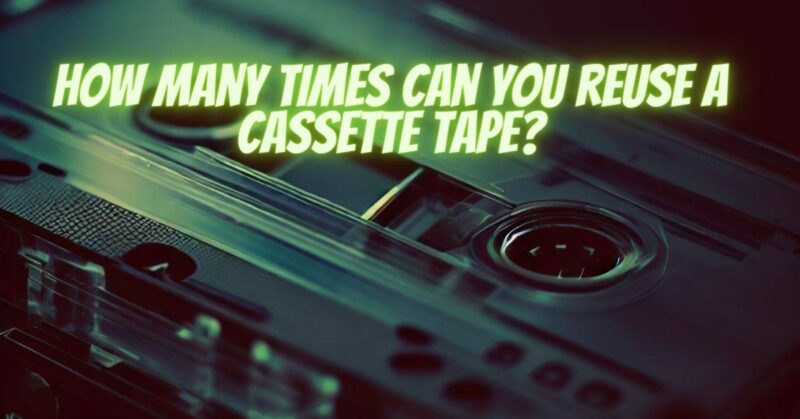Cassette tapes, those iconic relics of the analog era, once held a prominent place in the world of audio recording and playback. As technology has advanced, questions have emerged about the reusability of these magnetic wonders. In this article, we’ll delve into the intriguing question of how many times you can actually reuse a cassette tape and explore the factors that influence their durability.
Understanding Cassette Tape Composition
Cassette tapes are composed of several key elements:
- Magnetic Tape: The tape itself is coated with a layer of iron oxide particles, serving as the canvas for capturing and storing audio signals in the form of magnetic patterns.
- Plastic Shell: The tape resides within a protective plastic shell, which facilitates easy handling, storage, and playback.
- Playback and Recording Components: Inside a cassette player or recorder, the tape encounters playback and recording heads. These components are essential for extracting audio and adding new content.
Factors That Impact Cassette Tape Reusability
Several factors influence how many times you can reuse a cassette tape:
- Tape Quality: The quality of the magnetic tape itself plays a pivotal role. High-quality tapes, particularly those from reputable manufacturers, tend to withstand multiple recording cycles better than low-quality counterparts.
- Playback and Recording Equipment: The condition, alignment, and maintenance of your playback and recording equipment significantly affect the tape’s longevity. A well-maintained player or recorder with precise head alignment and regular cleaning is less likely to damage tapes.
- Storage Conditions: The environment in which you store cassette tapes when they are not in use can impact their reusability. Ideal storage involves a cool, dry setting, well-protected from direct sunlight and extreme temperatures.
- Playback and Recording Settings: The choice of bias settings and tape type (normal, chrome, or metal) can influence the tape’s longevity and reusability.
- Handling: Delicate and cautious handling of tapes is paramount. Touching the exposed tape surface with your fingers should be avoided, as oils can compromise its integrity.
- Playback Frequency: Frequent playback and recording can lead to tape stretching and wear on the playback and recording heads, which may affect the number of times a tape can be reused.
The Reusability of Cassette Tapes
Cassette tapes are indeed reusable, but their reusability has limitations:
- Degradation Over Time: After each recording cycle, the audio quality may slowly degrade due to wear, stretching of the tape, and magnetic signal loss. Expect some loss of fidelity with each reuse.
- Quality Matters: High-quality tapes tend to endure multiple recording cycles more gracefully compared to lower-quality counterparts.
- Playback Equipment: The condition and quality of your playback and recording equipment are critical. Well-maintained equipment is less likely to damage tapes and can contribute to increased reusability.
- Storage and Handling: Proper storage and careful handling can extend the life of a cassette tape, ultimately impacting its reusability.
- Audio Quality Expectations: When planning to reuse a cassette tape, it’s important to consider the nature of the content you intend to record. While it may be suitable for spoken word or less critical applications, you may notice audio degradation in music recordings.
Cassette tapes possess a degree of reusability, but the number of times they can be reused depends on various factors, including tape quality, equipment condition, and storage practices. While cassette tapes may not deliver pristine audio quality after multiple recording cycles, they can still serve practical purposes for less critical applications. Whether for nostalgic exploration or creative experimentation, reusing cassette tapes can be a fascinating journey into the analog realm, preserving the charm of this enduring medium.


